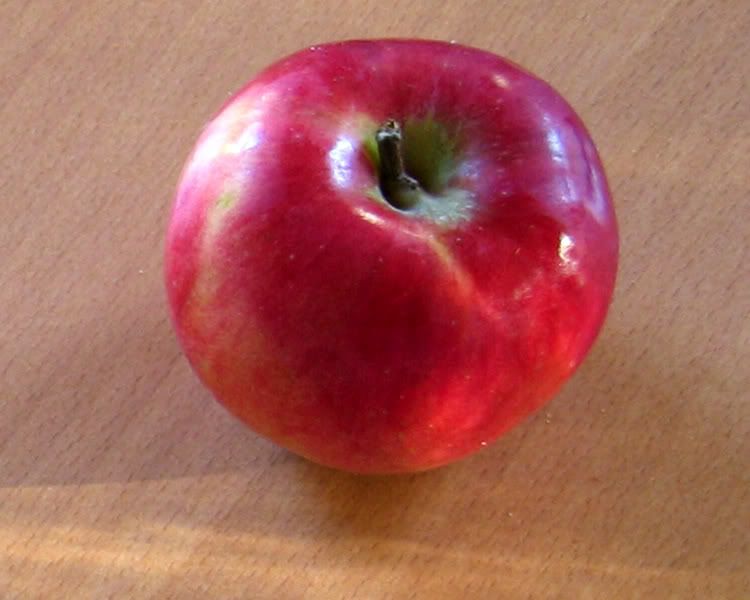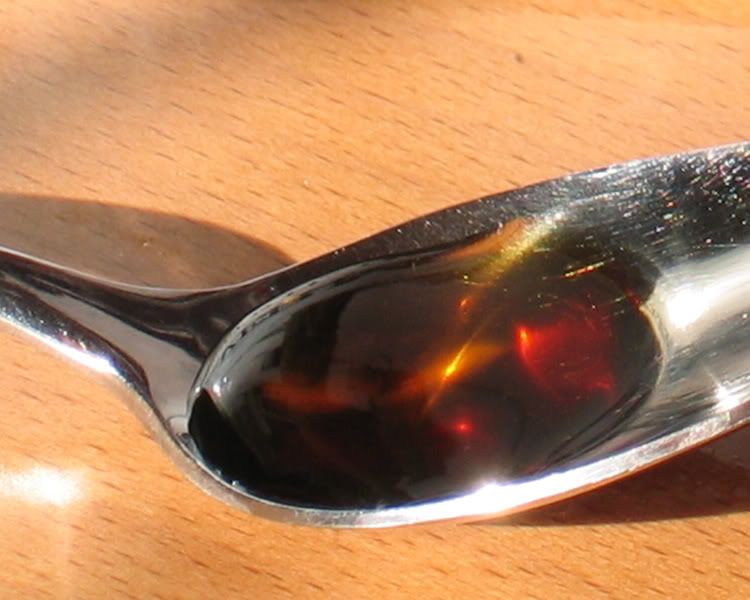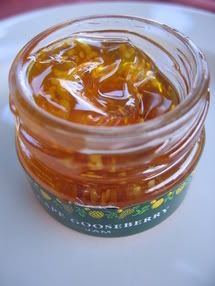Maple Apple Pie
Continuing with the Maple Syrup Madness… Maple Apple Pie!
 I’ve been focusing on apple pie in my weekly pie experiments for two reasons. Firstly, apples are widely available throughout the year. While they are admittedly at their peak in the fall, they remain of an acceptable quality for baking throughout the winter. Secondly, there’s the whole, cheesy ‘American as Apple Pie’ cliché, which I find deeply appealing in a Martha-Stewart-Little-Women-Gee-Whizz-Culturally-Symbolic kind of way!
I’ve been focusing on apple pie in my weekly pie experiments for two reasons. Firstly, apples are widely available throughout the year. While they are admittedly at their peak in the fall, they remain of an acceptable quality for baking throughout the winter. Secondly, there’s the whole, cheesy ‘American as Apple Pie’ cliché, which I find deeply appealing in a Martha-Stewart-Little-Women-Gee-Whizz-Culturally-Symbolic kind of way!
An apple pie usually consists of apples, seasonings, a sweetener and a binder, mixed together, then baked in a double crust. Since I’ve discussed crusts ad nauseum, let’s focus here on the filling.
APPLES
I favour organic braeburns at the moment, but I like to use a couple different varieties in my pies (the one to the left is a cortland). Some apples tend to get saucy, others hold their shapes, some are more sour, and others are more sweet. Mixed together, they create a more interesting and flavourful pie. Traditionally, apples are peeled, cored then sliced into half-moons, because chunkier cuts don’t cook as evenly, and tend to fall out of the crust when you slice into the pie. To the other extreme, very thin slices tend to disintegrate too quickly. I find 5mm (1/5in.) thickness to be a happy compromise.
couple different varieties in my pies (the one to the left is a cortland). Some apples tend to get saucy, others hold their shapes, some are more sour, and others are more sweet. Mixed together, they create a more interesting and flavourful pie. Traditionally, apples are peeled, cored then sliced into half-moons, because chunkier cuts don’t cook as evenly, and tend to fall out of the crust when you slice into the pie. To the other extreme, very thin slices tend to disintegrate too quickly. I find 5mm (1/5in.) thickness to be a happy compromise.
SEASONINGS
Traditional seasonings include cinnamon, allspice, clove and nutmeg. As I’ve mentioned in earlier pie dissertations, I am not a fan of these spices combined, whether in a pumpkin or apple pie. My favourite spice is probably dried ginger, and I think this goes really well with apples. A touch of minced fresh ginger is unusual but lovely. A bit of lemon juice is often used to keep the apple slices from oxidizing and turning brown, but I genuinely enjoy the sharpness, so I tend to be generous with the lemon juice, and often add a bit of finely grated lemon zest, either to the apples or in the crust.
SWEETENERS
Sugar is the natural choice, whether white, superfine (castor), light or dark brown, or a combination. This is actually one of those rare occasions where I favour white over brown, because I find the darker sugars overwhelm the apple. Other options include honey and molasses. This week, I’ve been using maple syrup, with lovely, rich results.
combination. This is actually one of those rare occasions where I favour white over brown, because I find the darker sugars overwhelm the apple. Other options include honey and molasses. This week, I’ve been using maple syrup, with lovely, rich results.
BINDERS
This is something added to absorb any excess juice, which might make the bottom crust soggy. Flour, cornstarch, potato starch and ground tapioca are all popular choices.
 ASSEMBLING YOUR PIE
ASSEMBLING YOUR PIE
Then you put them all together! Peel, core and slice your apples. I use 4-5 apples for a 25cm/10in. pie. In a bowl, toss the apple slices with your wet ingredients (such as lemon juice) first. Then add dry ingredients, like spices, herbs, and sugar. Taste a slice here and there to check it’s both evenly and tastily seasoned. You can’t really give fixed amounts here, because ingredients (such as apples, or even honey) vary in taste, and your tastes will vary, too. Add enough binder so that the apples don’t glisten with juice.
I hate to leave you on a cliff-hanger, but…
Later this week, I’ll describe how to assemble the pie for baking.

Categories: American, Recipe, Ingredients
 I’ve been focusing on apple pie in my weekly pie experiments for two reasons. Firstly, apples are widely available throughout the year. While they are admittedly at their peak in the fall, they remain of an acceptable quality for baking throughout the winter. Secondly, there’s the whole, cheesy ‘American as Apple Pie’ cliché, which I find deeply appealing in a Martha-Stewart-Little-Women-Gee-Whizz-Culturally-Symbolic kind of way!
I’ve been focusing on apple pie in my weekly pie experiments for two reasons. Firstly, apples are widely available throughout the year. While they are admittedly at their peak in the fall, they remain of an acceptable quality for baking throughout the winter. Secondly, there’s the whole, cheesy ‘American as Apple Pie’ cliché, which I find deeply appealing in a Martha-Stewart-Little-Women-Gee-Whizz-Culturally-Symbolic kind of way!An apple pie usually consists of apples, seasonings, a sweetener and a binder, mixed together, then baked in a double crust. Since I’ve discussed crusts ad nauseum, let’s focus here on the filling.
APPLES
I favour organic braeburns at the moment, but I like to use a
 couple different varieties in my pies (the one to the left is a cortland). Some apples tend to get saucy, others hold their shapes, some are more sour, and others are more sweet. Mixed together, they create a more interesting and flavourful pie. Traditionally, apples are peeled, cored then sliced into half-moons, because chunkier cuts don’t cook as evenly, and tend to fall out of the crust when you slice into the pie. To the other extreme, very thin slices tend to disintegrate too quickly. I find 5mm (1/5in.) thickness to be a happy compromise.
couple different varieties in my pies (the one to the left is a cortland). Some apples tend to get saucy, others hold their shapes, some are more sour, and others are more sweet. Mixed together, they create a more interesting and flavourful pie. Traditionally, apples are peeled, cored then sliced into half-moons, because chunkier cuts don’t cook as evenly, and tend to fall out of the crust when you slice into the pie. To the other extreme, very thin slices tend to disintegrate too quickly. I find 5mm (1/5in.) thickness to be a happy compromise.SEASONINGS
Traditional seasonings include cinnamon, allspice, clove and nutmeg. As I’ve mentioned in earlier pie dissertations, I am not a fan of these spices combined, whether in a pumpkin or apple pie. My favourite spice is probably dried ginger, and I think this goes really well with apples. A touch of minced fresh ginger is unusual but lovely. A bit of lemon juice is often used to keep the apple slices from oxidizing and turning brown, but I genuinely enjoy the sharpness, so I tend to be generous with the lemon juice, and often add a bit of finely grated lemon zest, either to the apples or in the crust.
SWEETENERS
Sugar is the natural choice, whether white, superfine (castor), light or dark brown, or a
 combination. This is actually one of those rare occasions where I favour white over brown, because I find the darker sugars overwhelm the apple. Other options include honey and molasses. This week, I’ve been using maple syrup, with lovely, rich results.
combination. This is actually one of those rare occasions where I favour white over brown, because I find the darker sugars overwhelm the apple. Other options include honey and molasses. This week, I’ve been using maple syrup, with lovely, rich results.BINDERS
This is something added to absorb any excess juice, which might make the bottom crust soggy. Flour, cornstarch, potato starch and ground tapioca are all popular choices.
 ASSEMBLING YOUR PIE
ASSEMBLING YOUR PIEThen you put them all together! Peel, core and slice your apples. I use 4-5 apples for a 25cm/10in. pie. In a bowl, toss the apple slices with your wet ingredients (such as lemon juice) first. Then add dry ingredients, like spices, herbs, and sugar. Taste a slice here and there to check it’s both evenly and tastily seasoned. You can’t really give fixed amounts here, because ingredients (such as apples, or even honey) vary in taste, and your tastes will vary, too. Add enough binder so that the apples don’t glisten with juice.
I hate to leave you on a cliff-hanger, but…
Later this week, I’ll describe how to assemble the pie for baking.

Categories: American, Recipe, Ingredients

